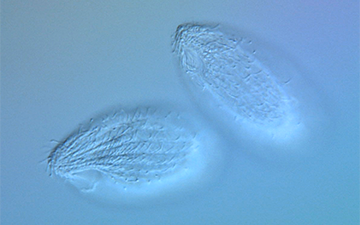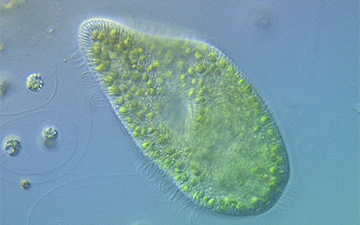Oligohymenophorea

Tetrahymena
Tetrahymena genus


Sorry, there is no photo available. If you have one, please submit
here
.
4 POINTS
Play: Tetrahymena has a MOVE of 1, and is considered an HETEROTROPH.
Fact: Tetrahymena is a widely used model organism in biological research.
cool, warm
Graphic by Keeling Labwww3.botany.ubc.ca/keeling/
Tetrahymena are free-living ciliate protozoa that can also switch from commensalistic to pathogenicmodes of survival. They are common in freshwater ponds. Tetrahymena species used as model organisms in biomedical research are T. thermophila and T. pyriformis.[1] (From: Wikipedia, July 2015) read more

Paramecium
Paramecium genus


Sorry, there is no photo available. If you have one, please submit
here
.
7 POINTS
Play: Paramecium has a MOVE of 1, and is considered an EUKARYOTROPH.
Fact: The green things are endosymbiotic algae known as chlorella.
cool, warm
Graphic by Keeling Labwww3.botany.ubc.ca/keeling/
Paramecium (parr-ə-mee-sh(ee-)əm, /ˌpærəˈmiːʃⁱəm/[1] or parr-ə-mee-see-əm, /ˌpærəˈmiːsiəm/) is a genus of unicellular ciliated protozoa, commonly studied as a representative of the ciliate group.Paramecia are widespread in freshwater, brackish, and marine environments and are often very abundant in stagnant basins and ponds. Because some species are readily cultivated and easily induced to conjugate and divide, it has […] read more